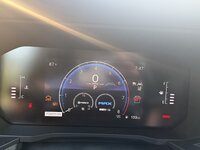If many are getting 25 or better in their stock rigs and you are just averaging almost 18 it doesn’t seem like the EPA rating on the sticker is “fake” as you say. I’m here to say it’s not only possible to get what the sticker says but that it’s possible to beat it, because we regularly do.All this talk of getting 20+ MPG is folly. I have a 2025 with 3,957 miles on the odometer and I'm getting a whopping 17.8 MPG. This is not wishfully folly of reading the dash cluster read out, its tracking actual miles and gallons on a spreadsheet.
Overall I'm very disappointed with the fake 23 MPG combined EPA rating on the window sticker. The mix of a woefully small gas tank, marginal cargo space, and nominal ground clearance are disappointing. Seriously, I have buyers remorse.
If a professor gives their class an exam and it’s possible to get a 100 but you do your best with only a 70% does that mean a 100 just ins’t possible, that those who did better are making it up? That’s silly, surely you would see that. So either make changes and improve your results or stop posting that the expertly evaluated claim was somehow faked. Perhaps if you get into the 20’s as many here do you’ll feel better about your truck too. It’s your ~$65,000, do as you wish



